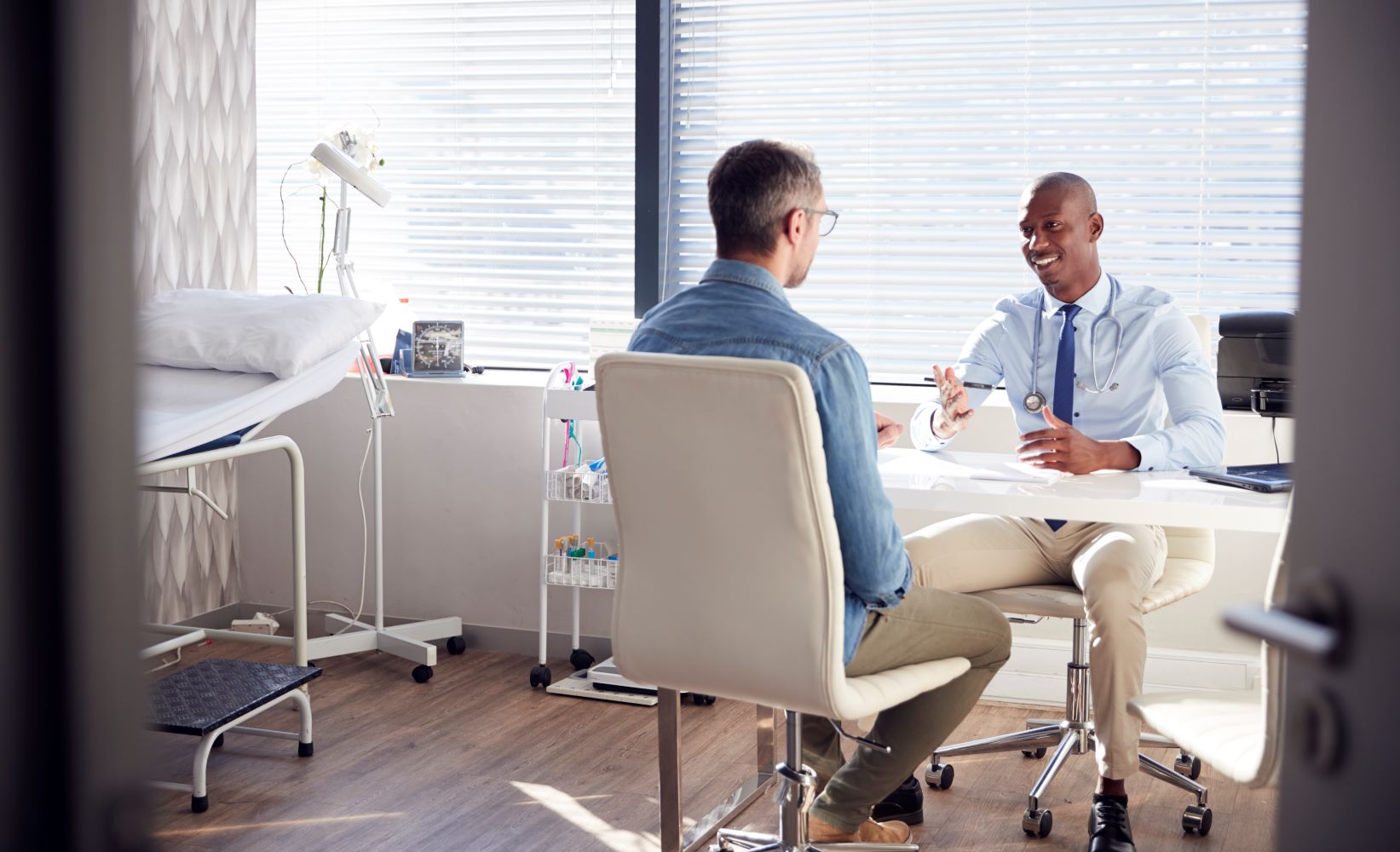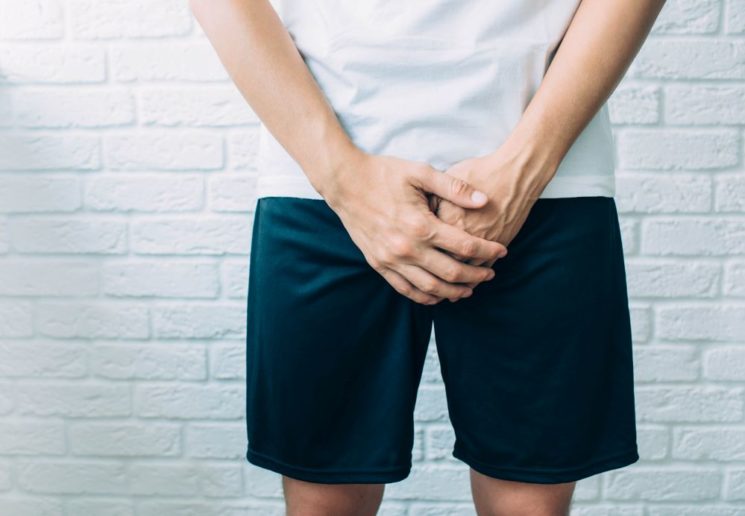
Around one in three men aged over 50 will experience urinary symptoms – and most of these will be caused by an enlarged prostate. We spoke to Mr Neil Barber, Consultant Urological Surgeon, to find out more about this condition and its treatment options.
What is an enlarged prostate?
Enlarged prostate is a common condition in men aged 50 and over, which often causes difficulty urinating. It is also formally known as benign prostate enlargement (BPE) or benign prostatic hyperplasia (BPH).
The prostate is a small gland, located between the penis and bladder. When it becomes enlarged, it presses on the bladder and the urethra (the tube urine passes through) which can cause problems with urination.
An enlarged prostate is not a symptom of prostate cancer, and men who have an enlarged prostate are not at an increased risk of developing prostate cancer.
Is enlarged prostate dangerous?
An enlarged prostate is not cancer and is not considered a serious threat to overall health. However, it is important to have an enlarged prostate assessed and treated as soon as possible. Left untreated, an enlarged prostate could lead to complications with urination.
Symptoms of enlarged prostate
Symptoms of an enlarged prostate mainly relate to urination and may include:
- finding it difficult to start weeing
- straining to wee
- having a weak flow of urine
- weeing that stops and starts
- an urgent need to wee
- needing to get up frequently to wee at night
- leaking wee (urinary incontinence)
Small amounts of urine may leak when you cough, sneeze, or lift something heavy (stress incontinence).
You may also experience leakage when you have an urge to wee but can’t make it to the toilet in time (urge incontinence).
Not all men experience symptoms of an enlarged prostate; some may have no symptoms at all.
Untreated enlarged prostate may lead to urinary tract infections (UTIs). In this instance, you may experience pain when urinating or have small amounts of blood in your urine.
How is enlarged prostate diagnosed?
If you think you have an enlarged prostate, you should make an appointment with a GP. Your GP will be able to assess your symptoms and medical history and make a referral to a urologist if required.
You will usually have a rectal examination, which involves feeling your prostate gland through the wall of your back passage (rectum).
You may also have a prostate-specific antigen (PSA) blood test, to check for prostate cancer, and a urine test, to check for diabetes.
A urologist can provide specialist advice, diagnostics, and treatment if you are experiencing complications from your enlarged prostate. You may be referred if:
- you are not responding to normal treatments
- you have frequent and/or difficult-to-treat UTIs
- you cannot fully empty your bladder
- you have kidney problems
- you have stress and/or urge incontinence
- you have a raised prostate-specific antigen (PSA) level
- your prostate feels abnormal during a rectal examination
Can an enlarged prostate be cured?
An enlarged prostate cannot be cured, but the symptoms can be controlled. In most cases, men with an enlarged prostate respond well to treatment.
If your symptoms are very mild, you may opt to ‘watch and wait’ to see if your condition worsens. Sometimes, symptoms can be effectively relieved with lifestyle changes.
Lifestyle changes for enlarged prostate
If your symptoms are mild, you may be advised to make the following lifestyle changes:
- Reduce your consumption of fizzy drinks and drinks that contain caffeine, artificial sweeteners, and alcohol. All these types of drinks can irritate the bladder and worsen symptoms.
- Drink less fluid in the evening. Stopping drinking two hours before bed may decrease the number of times you need to get up to wee during the night. However, it is important to ensure you are getting enough fluid throughout the day.
- Empty your bladder regularly. This is especially important if you know you will have reduced access to a toilet – for example, on long car journeys.
- Practice double voiding. Double voiding is when you pause after emptying your bladder before trying to empty it again. This ensures your bladder is fully emptied. However, you shouldn’t strain or put too much pressure on your bladder.
- Review your medications with a GP. Some common medications, like antidepressants or decongestants, can worsen enlarged prostate symptoms.
- Eat more fibre. This helps avoid constipation, which puts pressure on the bladder and can worsen symptoms. Fibre-rich foods include fruit, vegetables, and wholegrain cereals.
- Use absorbent pads or sheaths for leakage. These types of products can catch small amounts of urinary leakage and help you feel more confident.
- Try bladder training. Bladder training is a set of exercises that aim to increase the amount of urine you can hold and reduce the number of times you need to urinate. You should ask your clinician for more information if this is something you would like to try.
Medication for enlarged prostate
For mild to moderate symptoms that cannot be controlled through lifestyle changes alone, you may wish to try medication. You may need to take more than one type.
Commonly recommended medications include:
- alpha-blockers – which relax the muscles to make it easier to wee
- anticholinergics – which relax the bladder muscle if it’s overactive
- 5-alpha reductase inhibitors – which shrink the enlarged prostate gland
- diuretics – which are taken during the day, to speed up urine production (therefore decreasing the number of times you need to wee at night)
- desmopressins – to slow down urine production at night
- mirabegron – to relax your bladder muscle, allowing you to hold more urine and reducing your urge to wee
Aquablation
Aquablation, also known as water ablation, is a minimally invasive procedure that uses a robotically controlled, heat-free waterjet to remove enlarged prostate tissue. Compared to other procedures, Aquablation benefits from longer-lasting results and reduced complications.
The procedure uses a camera (called a cystoscope) and ultrasound imaging, which allows the surgeon to see and treat the prostate in real time. This increased precision helps reduce the chance of unwanted side effects and provides excellent clinical outcomes for patients.
UroLift™
The UroLift™ system uses tiny implants which lift and hold two sections of the prostate apart, relieving pressure on the urethra and restoring urine flow. The procedure is minimally invasive, requiring no tissue removal, and most patients can go home on the same day. The procedure benefits from a very low rate of side effects, and most men retain full sexual function.
Rezum steam therapy
Rezum therapy uses steam to help eliminate unwanted tissue within the prostate. Steam is delivered to the prostate using an instrument inserted through the urethra, so that the steam energy can destroy the excess tissue.
Unlike other procedures, patients can often go home (with a catheter fitted) on the same day.
Transurethral resection of the prostate (TURP)
Transurethral resection of the prostate (TURP) is the most common type of surgical treatment for enlarged prostate in the UK, which uses electrocautery (an electrically heated instrument) to eliminate tissues that are causing urine flow blockages.
TURP is often recommended when medication does not work, or patients do not want to be on medication long-term. Most patients will spend two nights in hospital before being discharged.
Greenlight laser prostatectomy
Greenlight laser prostatectomy, also known as photovaporisation of the prostate, is a minimally invasive procedure, which uses a laser to remove excess prostate tissue. The excess tissue is immediately vapourised (destroyed) without affecting the healthy tissue around it.
Holmium laser (HoLEP)
The Holmium laser (HoLEP) laser is a similar type of procedure to Greenlight, which uses laser technology to remove excess prostate tissue. However, in this procedure, the laser cuts the excess tissue into very small pieces before it is removed from the body via means of another instrument.
What if I can't have surgery for enlarged prostate?
If you are not suitable for surgery, you may have a catheter placed to help your bladder drain.
A catheter is a soft, thin, and flexible tube which can be passed through the penis or through a small hole in your stomach. Its purpose is to carry urine away from the body.
What are the side effects of enlarged prostate treatment?
Occasionally, you may experience unwanted side effects depending on what type of treatment you have. This may include:
- retrograde ejaculation – where semen doesn't come out of your penis during sex or masturbation, but flows into your bladder instead
- urinary incontinence – when you have problems controlling your bladder
- erectile dysfunction – difficultly getting and maintaining an erection
- urethral strictures – narrowing of the urethra, causing urinary problems
Side effects are uncommon and can often be effectively treated.
About the consultant
Mr Neil Barber is a consultant urological surgeon at Cromwell Hospital, specialising in minimally invasive treatments for enlarged prostate. He was instrumental in introducing several new leading-edge treatments to NHS England, including the GreenLight laser in 2002, Urolift in 2014, and Aquablation and iTind in 2019.


